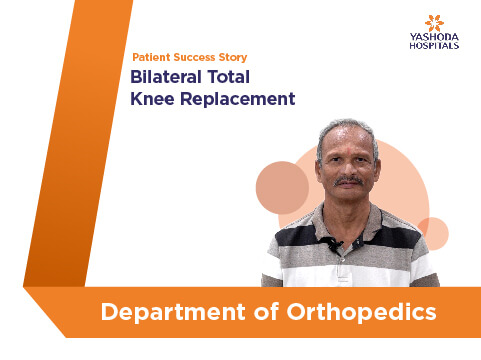- 24/7 Appointment Helpline
- International
- Home
- About
- News
- Locations
- Specialities
- Arthroscopy & Sports Medicine
- Bariatric Surgery
- Cardiology
- Cancer (Oncology)
- CT Surgery
- Critical Care
- Child Development Center
- Dental Surgery
- Dermatology
- Emergency Services
- ENT
- Endocrinology
- Fetal Medicine
- General Medicine
- General Surgery
- Gynaecology
- Heart & Lung Transplant
- Hematology & BMT
- Head & Neck Cancer
- Interventional Radiology
- Kidney Transplant
- Liver Transplant
- Lung Transplant & Robotic Thoracic Surgery
- Medical Gastroenterology
- Multiorgan Transplant
- Nephrology
- Neurosciences
- Nuclear Medicine
- Orthopaedics
- Ophthalmology
- Pulmonology
- Pancreas Transplant
- Pain Management
- Plastic Surgery
- Physiotherapy
- Pediatrics
- Pediatric Surgery
- Radiation Oncology
- Radiology
- Rheumatology
- Robotic Science
- Surgical Gastroenterology
- Spine Surgery
- Urology
- Vascular Surgery
- International Patient
- Patient Info
- Blog
914045674567 – 24/7 Helpline
04066000066 – International
- Home
- Specialities
- Arthroscopy & Sports Medicine
- Bariatric Surgery
- Cardiology
- Cancer (Oncology)
- CT Surgery
- Critical Care
- Child Development Center
- Dental Surgery
- Dermatology
- Emergency Services
- ENT
- Endocrinology
- Fetal Medicine
- General Medicine
- General Surgery
- Gynaecology
- Heart & Lung Transplant
- Hematology & BMT
- Head & Neck Cancer
- Interventional Radiology
- Kidney Transplant
- Liver Transplant
- Lung Transplant & Robotic Thoracic Surgery
- Medical Gastroenterology
- Multiorgan Transplant
- Nephrology
- Neurosciences
- Nuclear Medicine
- Orthopaedics
- Ophthalmology
- Pulmonology
- Pancreas Transplantation
- Pain Management
- Plastic Surgery
- Physiotherapy
- Pediatrics
- Pediatric Surgery
- Radiation Oncology
- Radiology
- Rheumatology
- Robotic Science
- Surgical Gastroenterology
- Spine Surgery
- Urology
- Vascular Surgery
- Treatments
- Procedures
- International Patients Info
- Book Doctor Appointment
- Locations
- Health Checks
- Patient Info
- Health Blog
- About Us
- News
- Reports
- Education
- Careers
- Contact Us
-
Book Doctor
Appointment -
Free Medical
Opinion -
Chat on
WhatsApp
Patient Testimonial for Reconstructive Surgery with Latissimus Dorsi Muscle Flap for Wound Closure
Testimonial by Mrs. M. Mariyamma
The latissimus dorsi muscle is the largest muscle in the body that allows coverage of extremely large wounds. It can be harvested on a single pedicle and can even be combined with other flaps to create a flap complex that can cover massive wounds. However, despite the large size, removal of the muscle does not result in a functional deficit.
It is one of the most dependable and versatile flaps used in reconstructive surgery, and it is well-known for its use in chest wall and postmastectomy reconstruction. It has also been used successfully to cover significant soft tissue defects in the head and neck, either as a pedicled flap or as a microvascular free flap.
Postoperative care necessitates regular inspection of the donor area for the presence of hematoma and seroma, which may necessitate the use of drains for a short period of time. However, no special dressings are necessary, and you can use the arm that corresponds to the donor area.
Mrs. M. Mariyamma from Hyderabad successfully underwent Reconstructive Surgery with Latissimus Dorsi Muscle Flap for Wound Closure at Yashoda Hospitals, Hyderabad, under the supervision of Dr. Sasikanth Maddu, Consultant Plastic & Cosmetic Surgeon.
Other Testimonials
Mrs. Sangeeta Kumari
Transsphenoidal surgery for pituitary microadenoma, The patient experience: The...
Read more
Baby Mayank Roy
Hirschsprung's disease is a congenital condition that affects the large...
Read more
Mr. C. H. Srinivas Rao
Knee replacement surgery, also known as knee arthroplasty, is a procedure that...
Read more
Mr. N Sandeep Goud
Avascular necrosis, also known as osteonecrosis, is a condition that occurs due...
Read more
Mr. Subham
COVID-19 can have a lasting affect on the lungs of the infected. It can cause...
Read more
Miss. Sharmila Tamang
An ovarian cyst is a fluid-filled sac or pouch on the ovary. The common causes...
Read more
Mr. Vijay Kumar Jain
Mouth Cancer refers to a tumor that develops in any part of the oral cavity. It...
Read more
Mr. Christopher
83 year old Mr. Christopher Besweli Kaswabuli from Uganda, started experiencing...
Read more
Baby of Rama Devi
Patent Ductus Arteriosus (PDA) is a heart condition that occurs when the ductus...
Read more
Sithara (Daughter of Mrs. Vasantha)
Acute Respiratory Distress Syndrome (ARDS) is a severe condition characterised...

















